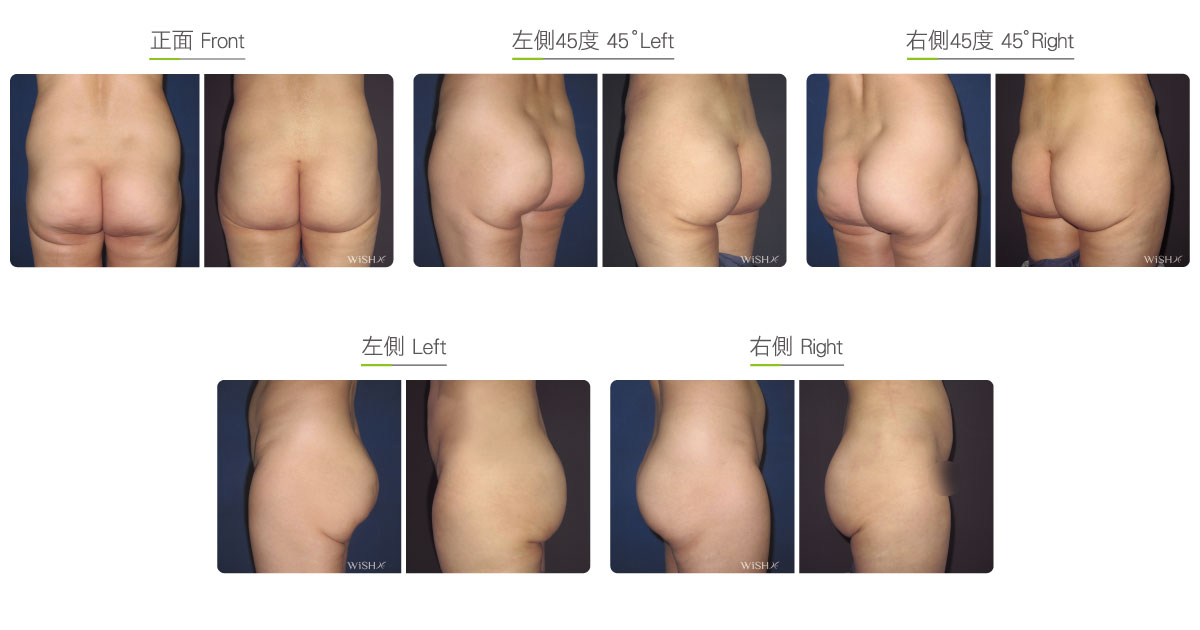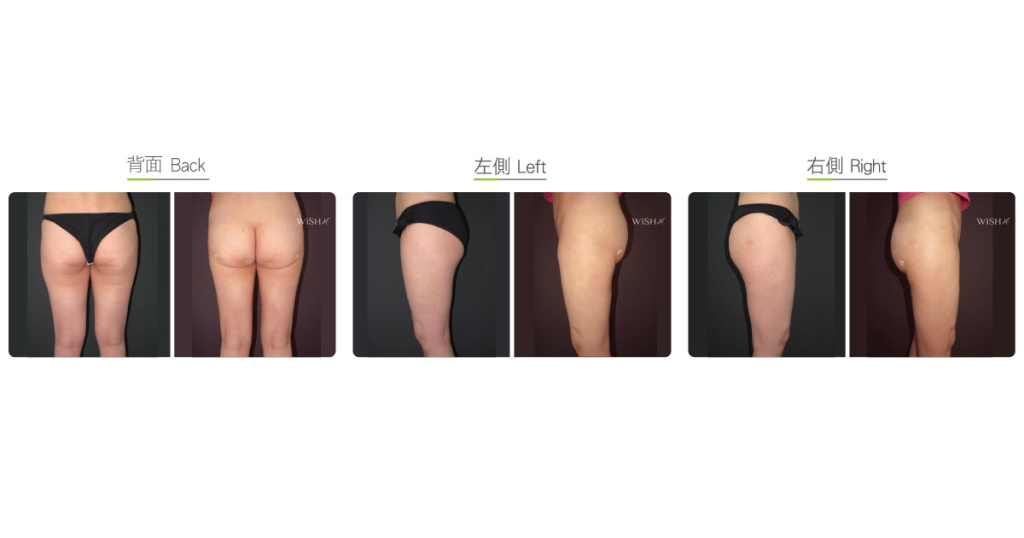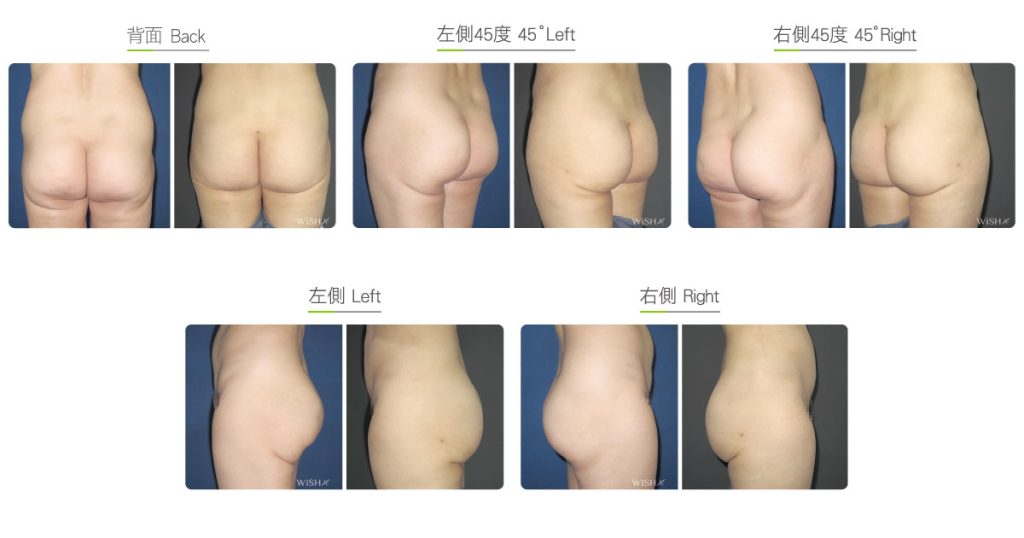Gluteal Fold Lipoplasty
The gluteal crescent fold, also called the gluteal “smile line” or interior gluteal groove, is located at the border of the inferiormost buttocks and thighs and derives its name as it appears concave due to the sagging and compression of gluteal muscles and fats, thus presenting an arc-shaped shadow. It is composed of strenuous skin fibrous ligaments and septa and primarily functions to provide support to the inferior buttocks and prevent gluteal droopiness. However, due to factors like a congenitally heavy gluteal load, gluteal laxity and deformity after child delivery, gluteal groove looseness after thigh liposuction, gluteal droopiness because of skin aging, or gluteal fat loss due to excess weight loss, the gluteal fold loses its original roughness and strength and ultimately becomes loose or absent, and patients with severe conditions even present with overall gluteal sagging, rendering a more senile stature. Therefore, one of the links to restore a youthful gluteal curvature is to reshape the gluteal smile line using liposuction.
Many factors affect the gluteal shape, such as patient age, buttock size and mass, skin tightness and elasticity, fat distribution near the thigh, and individual work or exercise habits, particularly buttock mass and skin elasticity, so reshaping the gluteal fold should focus on decreasing the fat load of the buttock and enhancing gluteal skin tightness. Currently, the surgical method employed by Dr. Chuang is Ultra-Z liposuction to sculpt a fine gluteal line; this works by the application of ultrasonic lipolysis to suction out fats adjacent to the gluteal folds, followed by the utilization of the thermal effect of an ultrasonic probe to prompt the adhesion of the skin dermis to the deep muscular fascia, which stably fixate gluteal folds to the muscular layer, thus making it less likely to become dislocated or lose again. In the procedures, first, a 0.5-cm incision is made at the lateral side of gluteal folds. After the infusion of hemostatics and painkillers to the subcutaneous area, superficial fats at the gluteal folds and near the thigh are suctioned (these should be as thin as possible to facilitate future skin adhesion). Next, the secondary subcutaneous thermal effect by ultrasonic vibrations is applied to render the dermis to attach to the muscular fascia at the gluteal folds. Then, a skin tape is used at the lower margin of the gluteal folds immediately after surgery, and tights and butt lift tights should be worn for at least 2 months to sustain the future line and tightness of the gluteal folds.
Gluteal smile line liposuction is relatively suitable for young populations with premature gluteal droopiness or those with a recent gluteal fold laxity incurred by childbearing or obesity, and usually it is not indicated for patients with obvious gluteal laxity due to aging or massive weight loss. Moreover, patients with a very big gluteal mass should concurrently undergo entire buttock and lateral thigh liposuction to alleviate the gluteal fold load and improve the durability of results.
Surgical conditions
Duration
- Type of anesthesia: IV sedation + local anesthesia
- Type of incision: A 0.5-cm incision at the lateral margin of the gluteal folds
- Recovery: 5–7 days
- Removal of stitches: 7–10 days
General instructions
No food and water on the day of surgery
- Paste a tape at the gluteal folds for 2 weeks postoperatively to prevent premature dislocation of the gluteal folds.
- Avoid running or lower limb work for 1 month postoperatively.
- Wear a compression garment for 3 months postoperatively to fixate the gluteal folds.
Ideal candidates
- Patients with congenital gluteal hypertrophy and droopiness
- Those with gluteal droopiness and gluteal line laxity due to childbearing or weight loss
- Those with age-associated gluteal fold laxity
- Those with loose gluteal folds caused by prior thigh liposuction
- Those with an uneven shape or horizontal level of gluteal fold
- Those aspiring for a perfect peach-shaped buttock
Possible complications
- Scar
- Asymmetry
- Incomplete correction
Surgical advantages
-
It restores the shadow and curvature of the gluteal folds and makes the buttocks more stereoscopic.
-
The gluteal folds closely attach to the deep muscles, which also present the visual results of a buttock lift.
-
It prevents further drooping or looseness of the buttocks.
-
It relieves the cellulites of droopy buttocks.
Surgical drawbacks
-
It is relatively slow to fixate the new gluteal lines after the operation (average of 2 months).
-
Excess activities or compression may cause premature dislocation of the gluteal folds.
-
It is not indicated for patients with excessively loose and flat buttocks.
-
The gluteal lines may become lax due to aging in the future.
Possible procedures in conjunction
-
Buttock liposuction
-
Thigh liposuction
-
Autologous fat buttock augmentation




